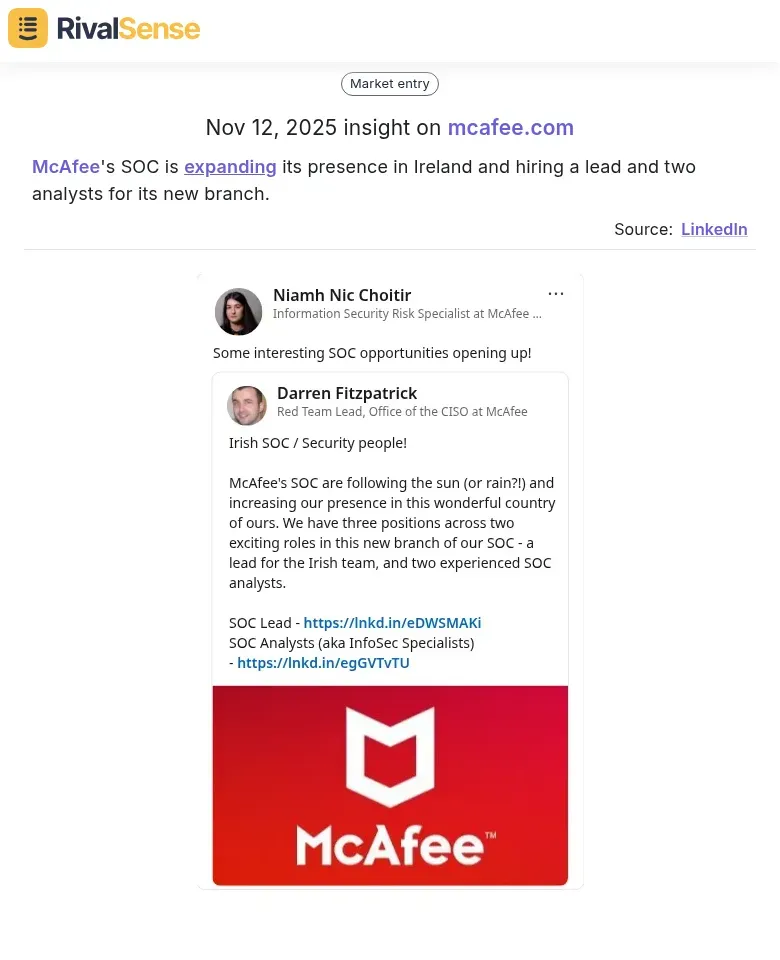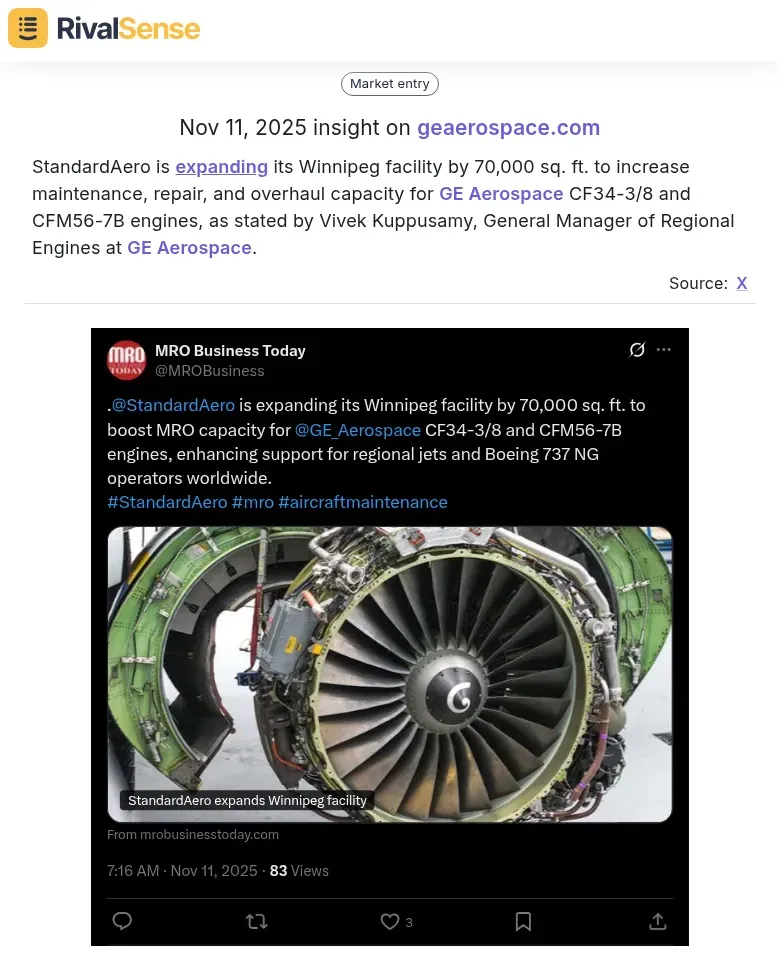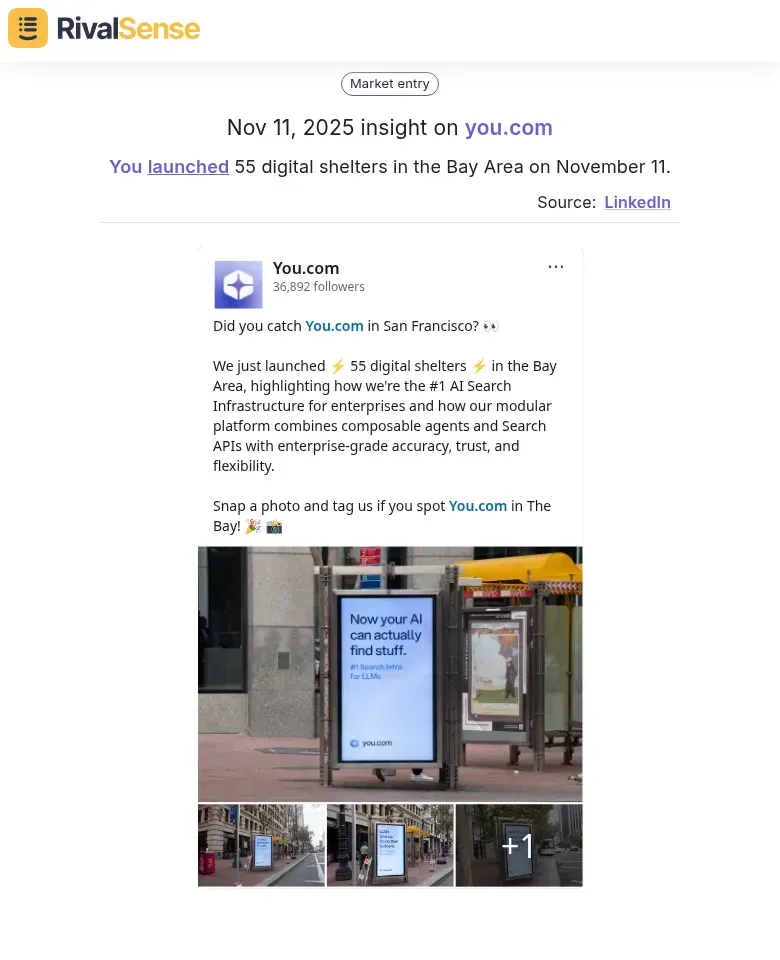Mastering Market Entry with Competitor Win-Loss Analysis
Market entry success hinges on understanding why deals are won or lost. Win-loss analysis provides critical insights into buyer priorities, competitive gaps, and your market positioning. Instead of relying on anecdotal evidence, systematic feedback collection transforms scattered observations into actionable intelligence. For example, if you discover customers consistently choose competitors due to superior integration capabilities, you can prioritize API development in your market entry strategy.
Practical steps include:
- ✅ Interview 10-15 recent won and lost deals
- ✅ Use structured questionnaires focusing on decision criteria and competitor comparisons
- ✅ Analyze patterns to identify key differentiators and weaknesses
This approach reveals not just what you're doing wrong, but what the market truly values—enabling you to enter with confidence and precision.
Learning from Competitor Expansion Patterns
Analyzing competitor expansion patterns reveals strategic market entry opportunities. Start by mapping competitors' geographic footprints to identify underserved regions where demand exists but supply is limited. For instance, if a rival expands to Southeast Asia but skips Vietnam, that's your opening. Monitor hiring patterns and facility investments as leading indicators to gauge market commitment and timing.
For example, RivalSense tracked that McAfee's SOC is expanding its presence in Ireland and hiring a lead and two analysts for its new branch.  This type of insight is valuable because it signals geographic expansion and resource allocation, helping you identify new market opportunities before competitors saturate them.
This type of insight is valuable because it signals geographic expansion and resource allocation, helping you identify new market opportunities before competitors saturate them.
Practical steps:
- Create a competitor expansion timeline with dates, locations, and investment sizes
- Use tools like LinkedIn Sales Navigator to track hiring spikes in target regions
- Analyze quarterly reports for capital expenditure mentions
- Time your entry 3-6 months after competitor expansion announcements to leverage their market education while avoiding direct competition
- Allocate resources based on competitor investment levels—match their commitment in high-potential markets
💡 Key insight: Competitors often test markets with small teams before major investments. Enter during this validation phase to establish presence with minimal resources.
Extracting Insights from Competitor Infrastructure Investments
Infrastructure investments reveal competitor priorities and market confidence. Studying capacity expansions—such as new offices, warehouses, or production lines—helps gauge demand surges and service gaps they're addressing. For example, a rival opening multiple regional hubs signals untapped geographic opportunities that you can exploit.
Consider how RivalSense reported that StandardAero is expanding its Winnipeg facility by 70,000 sq. ft. to increase maintenance, repair, and overhaul capacity for GE Aerospace CF34-3/8 and CFM56-7B engines, as stated by Vivek Kuppusamy, General Manager of Regional Engines at GE Aerospace.  This insight is valuable because it highlights competitor confidence in market demand and reveals service gaps, allowing you to benchmark your entry strategy against their investments.
This insight is valuable because it highlights competitor confidence in market demand and reveals service gaps, allowing you to benchmark your entry strategy against their investments.
Practical steps:
- Track public announcements, permits, and job postings for expansion clues
- Map infrastructure against customer pain points to identify underserved areas
- Compare your tech stack to theirs, prioritizing gaps that impact customer experience
🔍 Tip: Look for recurring investments—consistent tech upgrades indicate a core advantage you must address.
Leveraging Competitor Launch Strategies for Market Entry
Competitor launch strategies reveal critical market entry insights that can shape your timing and resource allocation. Analyzing their timing and scale helps identify saturation levels and opportunity windows. For instance, if competitors consistently launch in Q1 with massive budgets, consider a Q3 entry with targeted resources to avoid direct competition.
RivalSense captured an example where a competitor launched 55 digital shelters in the Bay Area on November 11.  Monitoring such launches is valuable because it helps you time your market entry to avoid peak competitor activity and leverage their market education efforts for faster penetration.
Monitoring such launches is valuable because it helps you time your market entry to avoid peak competitor activity and leverage their market education efforts for faster penetration.
Practical steps:
- ✅ Track competitor launches quarterly to spot trends
- ✅ Map geographic footprints to find gaps
- ✅ Adjust entry timing based on competitor saturation cycles
🚀 Tips: Avoid launching during peak competitor activity; leverage regional weaknesses for faster penetration.
Building Your Win-Loss Analysis Framework for Market Entry
Building a robust win-loss analysis framework is crucial for successful market entry. Start by establishing systematic data collection processes for both won and lost opportunities to gather actionable intelligence. Use CRM tools to track key metrics like deal size, sales cycle length, and competitor involvement for a comprehensive view.
Develop structured interview guides focused on market-specific decision criteria. Include questions about buyer personas, pain points, competitor strengths, and unique market requirements. For example, ask: 'What specific factors differentiated the winning solution in this market?'
Checklist for a solid framework:
- [ ] Review recent win-loss patterns
- [ ] Identify competitor vulnerabilities
- [ ] Update positioning strategy
- [ ] Adjust product roadmap priorities
Create cross-functional review processes involving sales, marketing, and product teams. Hold monthly strategy sessions to translate insights into actionable market entry plans.
Translating Win-Loss Insights into Market Entry Action
Translating win-loss insights into market entry action requires a systematic approach to refine your strategy. Start by analyzing competitor win-loss data to identify patterns in customer objections, decision criteria, and competitive advantages. Use these findings to adjust your product positioning and sales processes for better alignment with market needs.
Optimize your sales process by incorporating win-loss insights into training and playbooks. Create competitive battle cards highlighting your differentiators against key rivals. Implement a continuous feedback loop to stay agile and responsive to market changes.
Practical steps:
- Develop a win-loss analysis checklist: review deal stages, competitor involvement, and customer feedback
- Map competitor messaging to identify gaps in your own
- Set up alerts for competitor product launches or pricing changes
- Conduct post-mortems on market entry campaigns to iterate quickly
By leveraging real-time intelligence, you can pivot your messaging, enhance differentiation, and increase market entry success rates.
Ready to streamline your market entry strategy? Try RivalSense for free at https://rivalsense.co/ and get your first competitor report today to gain actionable insights on product launches, expansions, and more—all delivered in a weekly email.
📚 Read more
👉 Real-World Competitor Analysis: Tracking Leadership Changes
👉 The Ultimate Guide to Setting Up Key Account Tracking: A Practical Playbook for B2B Leaders
👉 Engineering Consulting Competitor Webinar Analysis Guide
👉 How Glean's Snowflake Partnership Drove Competitive Intelligence Wins
👉 Unlock Key Account Growth with Competitor Website Monitoring
